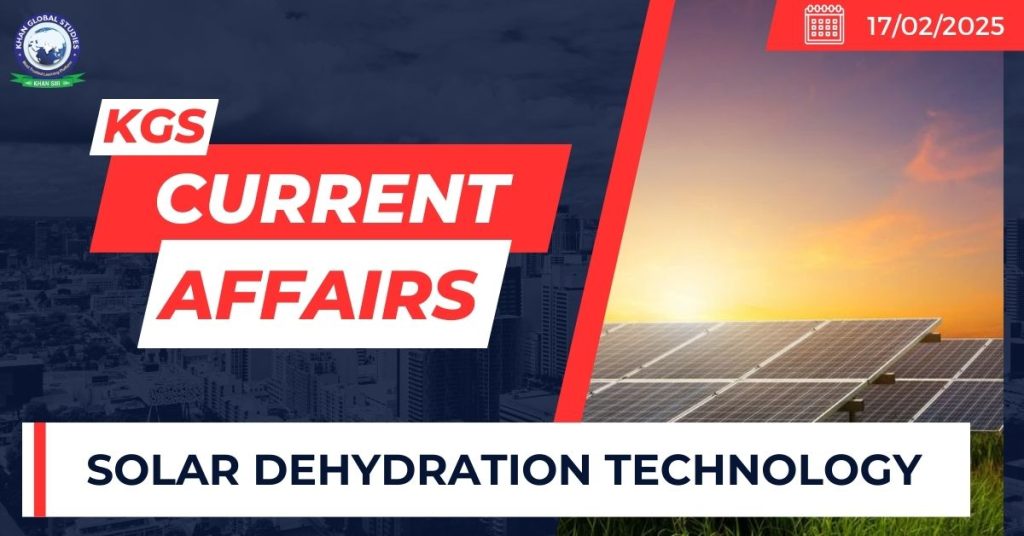Context:
The Indian Institute of Technology (IIT) Kanpur’s Ranjit Singh Rozi Shiksha Kendra has developed an innovative solar dehydration technique.

- IIT Kanpur has collaborated with the Department of Food Processing at CSJMU University to establish standard operating procedures and quality protocols for solar dehydration.
- Objective: To preserve agricultural produce using sustainable energy.
- The initiative led by IIT Kanpur was demonstrated to 30 farmers from the Hariya Nature Farming Producer Company in Shivrajpur and supported by Shramik Bharti and Lavkush Farmer Producer Organization (FPO).
- The demonstration took place under the Namami Gange project in Kalyanpur block.
- Farmers received hands-on training in the solar dehydration process and this training helps them use eco-friendly preservation methods on their farms.
About Solar Dehydration Technique
- Direct solar dehydration is the conventional procedure of dehydrating agricultural and food products.
- In this solar drying technique, a transparent cover reduces heat losses and protects the food material from dust and rain.
Process
- Solar dryers work by using solar energy to heat air, which helps remove moisture from food in a drying chamber.
- Airflow is controlled through vents or small solar ventilators, and the temperature is regulated by the greenhouse effect or air temperature differences.
- There are two main types of solar dryers:
- Direct Sun Dryers: Food is placed in boxes with transparent lids, and the air inside heats up due to the greenhouse effect, with vents regulating air exchange.
- Indirect Sun Dryers: Food is kept away from direct sunlight, with fresh air heated separately to preserve nutrients in foods sensitive to sunlight.
- Hybrid Dryers combine solar energy with other fuels like biomass or fossil fuels for additional heating.
Advantages
- Solar energy drying helps preserve the color, flavor, and nutrients of food.
- It reduces costs, minimizes waste, and boosts productivity by improving both the quality and quantity of food.
- It will Empower farmers with technological innovations ensuring better financial stability for farmers and expanding market access for agricultural products.
- It will integrate solar dehydration into traditional farming practices fostering a more resilient and self-sufficient farming community.

